What are Mirror Slap and Shutter Shock?
Mirror slap and Shutter shock are both problems that can cause blurring when you take a photo. In this article we'll look at what these problems actually are, and how they can be avoided.
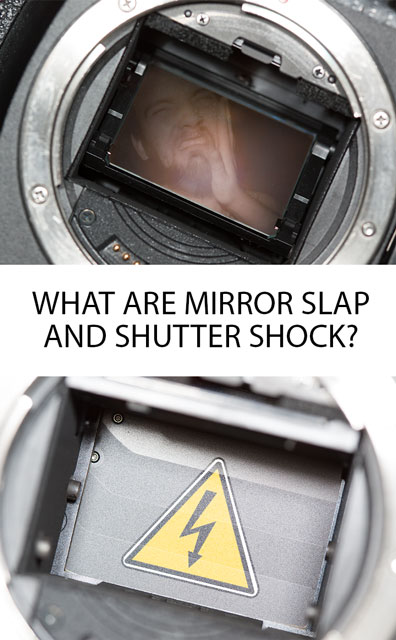
Image makes use of Warning by yves_guillou and naughty nick! by Peter Pawlowski (licensed CC-BY)
Mirror Slap
Mirror slap is a problem found only in DSLR cameras. DSLR cameras use an optical viewfinder, where a mirror inside the camera bounces the image from the lens up into the viewfinder. When you come to take a photo, the mirror flips up, so the image from the lens can hit the camera's image sensor.
When the mirror flips up it creates a very small amount of vibration. And in some cases this vibration can be enough to cause a small amount of blurring in the image.
You are most likely to see this at shutter speeds between around 1/100s to 1/4s. At faster shutter speeds, the shutter opens and closes too quickly for the vibration to have much effect. At slower shutter speeds, most of the image is formed after the vibration dies out.
The effects of mirror slap are most likely to be seen when using a camera on a tripod. When hand holding the camera you are much more likely to see blur caused by not being able to hold the camera 100% steady than you are from mirror slap. The longer the focal length you are using, the more likely you are to see an effect.
To counteract the effect of mirror slap, you can use what is known as mirror lock-up. Some cameras have this available as a drive mode, while others have it available as a menu option. With mirror-up mode, when you first press the shutter button, the mirror flips up, but a photo is not taken. Then at a second press of the shutter button, the photo will be taken.

Crop of photo taken at 300mm, 1/25s shutter speed, camera on tripod - there is slight blurring caused by mirror slap.
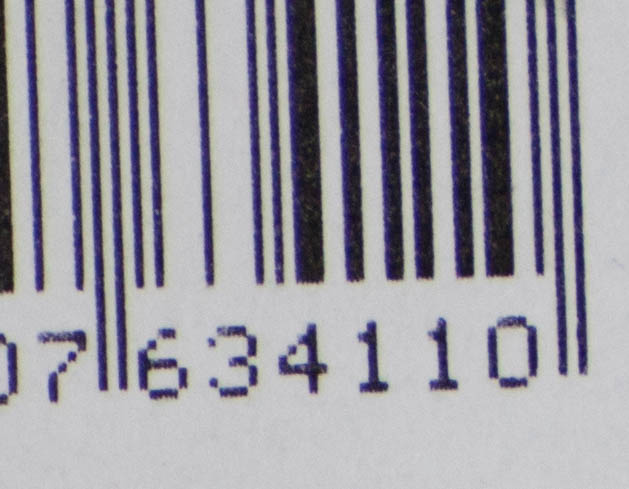
Same setup as previous image, but using mirror lock-up. Giving time between the mirror flipping up and opening the shutter eliminates the blurring seen in the previous image.
Using the camera on a tripod with a remote shutter release and mirror-up mode can be used to maximize image sharpness. Press the shutter to lock up the mirror and wait a few seconds for any vibrations to subside. Then press it again to take the image. It is important to use a remote shutter release, as otherwise you'll still be adding vibrations caused by pressing down the shutter button on the camera.
Use of Liveview mode is another method that does essentially the same thing. When you go into liveview mode, the mirror flips up so that the image sensor can receive the light from the lens. The live view from the sensor is then displayed on the rear screen. Since the mirror is flipped up for this, taking a photo in liveview mode has the same effect as using mirror-up.

Crop of photo taken at 300mm, 1/25s shutter speed, camera on tripod - there is slight blurring caused by mirror slap.
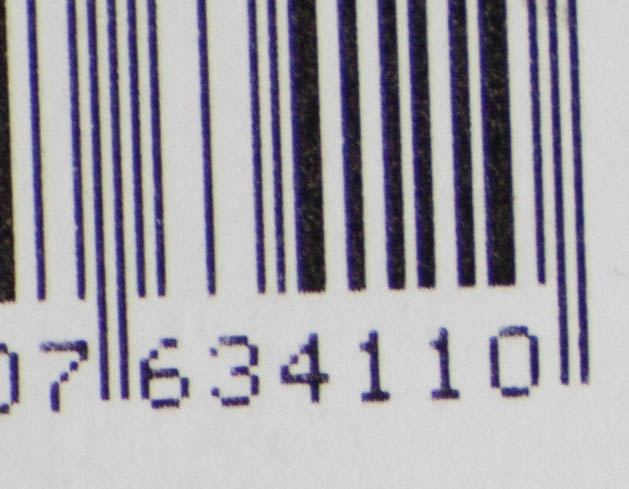
Same setup as previous image but using liveview mode. The image is sharper due to lack of any vibrations from moving the mirror.
However, with liveview mode, you must ensure that it is set to either contrast detect autofocus or manual focus. (Manual focus can normally be set on the lens, liveview autofocus method is usually a menu option). If liveview is set to use phase-detect autofocus (the standard autofocus system in DSLRs), then when you take a photo the mirror will flip down, the camera will autofocus, then the mirror will flip back up to take the photo. With the flipping of the mirror down and then up this will cause more vibrations, not less.
Shutter Shock
Shutter shock is a potential problem found in all cameras, though it is more common in mirrorless cameras than DSLRs. It relates to vibrations caused by the shutter mechanism when taking a photo.
The vast majority of cameras use a mechanical shutter. This consists of two 'curtains'. When you take a photo, it starts with the first curtain covering the image sensor, while the second curtain is below (or above) the sensor. The first curtain then moves up (or down) revealing the image sensor, and starting the exposure. The second curtain then moves up (or down), covering up the image sensor and ending the exposure.
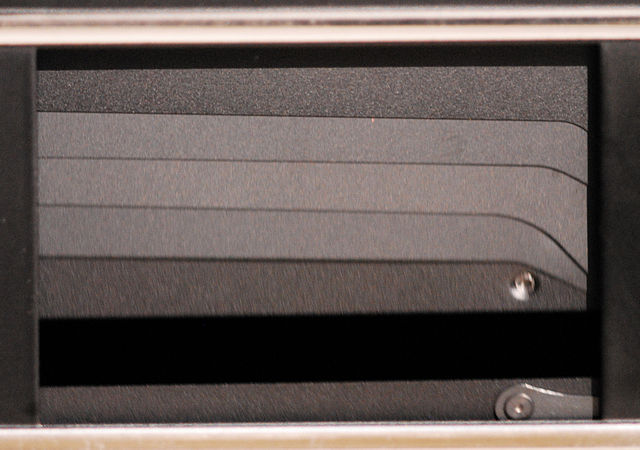
Focal plane shutter firing at 1/500s by MadMaxMarchHare (licensed CC-BY-SA). You can see the two curtains moving with a black gap between them exposing the sensor. (The photo is actually of a shutter moving in a film camera so where the sensor would be just appears black).
Because mirrorless cameras have the image sensor exposed by default, they have to move the shutter curtains into position before starting the exposure. It is the vibrations caused by this movement that is typically the cause of Shutter shock blurring.
Whereas with a DSLR, the shutter curtains will already be in place covering the sensor (unless using liveview mode). Also, DSLRs usually have larger and heavier bodies that better disperse any minimal vibrations from the shutter curtains.
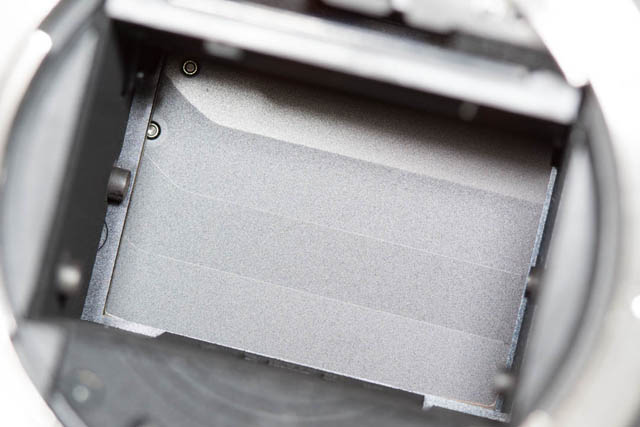
With a DSLR the shutter is reset after each photo, ready for the next photo
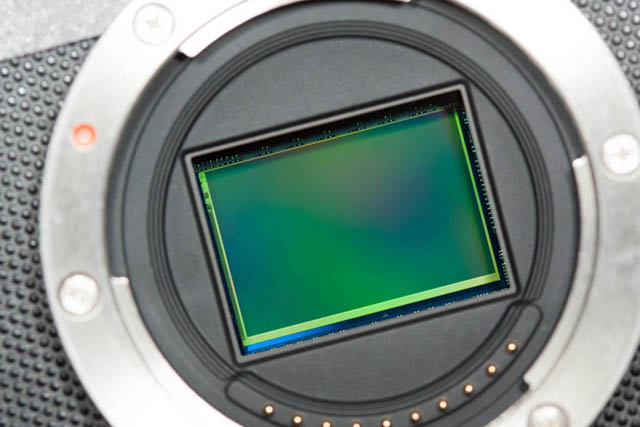
With a mirrorless camera the sensor is exposed by default. The shutter is only reset just before the photo is taken, which can cause some small vibrations.
That's not to say that shutter shock is a significant issue with mirrorless cameras, or that DSLRs are immune from it. Blurring from either shutter shock or mirror slap are both quite rare.
Just like Mirror slap, blur from Shutter shock is most likely to be visible at shutter speeds around 1/100s - 1/4s. And similarly, the longer the focal length, the more likely you are see an effect.
To combat Shutter shock, some cameras offer an electronic first curtain shutter. This means that the camera does not start with a shutter curtain covering the sensor, instead it just resets the sensor and starts the exposure. Then the exposure is ended by the second curtain covering up the sensor, as normal.
Other cameras offer the option of a short delay (e.g. 1/8s) between when you press the shutter and when the photo is actually taken. This may be termed as shutter delay or anti shock depending on the camera manufacturer. This gives enough time for the shutter curtains to move into place and the vibrations to disperse before the first curtain moves to start the actual exposure.
Neither Mirror slap or Shutter shock are big issues that you should worry about. However, if you're taking a photo (or series of photos) and they're not as sharp as you expected, then it is worth looking at mirror slap and shutter shock as potential causes. Though I would first check the issue is not caused by other factors (e.g. handheld camera shake, wobbly tripod / tripod head, focus issues, poor quality UV filter, camera shake from pressing the shutter button, etc.)





Great article may I ask what camera model is the one illustrated in the last picture? The mount looks like canon EF.
Hi Nikos
The mirrorless one (with sensor exposed) is Fuji X mount, the camera model is X-A1. The DSLR one (with shutter covering sensor) is Canon EF mount, camera model is 5D mkII.
Regards
Dave
Great article. Have you heard of Shutter Bounce? It seems to be another issue that causes a narrow band on top of the image to be overexposed. I have this problem on my EOS6D and was told the shutter needs to be replaced, without further details. Cost is $700 mainly labour.